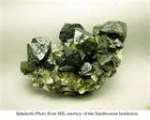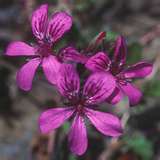 With all the discussion in the past few days about vitamins and minerals, and zinc being attacked in one study, please know that zinc is important for immunity, taste, glandular health, and much more.
With all the discussion in the past few days about vitamins and minerals, and zinc being attacked in one study, please know that zinc is important for immunity, taste, glandular health, and much more.
We like to suggest out low dose zinc that is combined with food to make it absorb better, and to use this product in several doses rather than one large milligram amount. Zinc is difficult to absorb.
An aid to regulating brain cell communication
A report published online on September 21, 2011 in the journal Neuron reveals an important role for the mineral zinc in the regulation of brain cell communication. The finding is the first instance of proof that an element, as opposed to a chemical compound, is used by the nervous system as a neurotransmitter.
In research conducted over half a century ago, high concentrations of zinc were found in nerve cell compartments known as vesicles that package neurotransmitters—the chemicals that facilitate the transmission of impulses between neurons. Neurons in the brain’s hippocampus, which is the center of learning and memory, were discovered to have the highest levels of zinc. However, it remained unknown whether the zinc that was found in the cells’ vesicles actually played a role in nerve cell communication.
For the current investigation, researchers at Duke University and the Massachusetts Institute of Technology utilized a novel zinc chelator to help bind and remove zinc from hippocampal brain samples derived from mice. “We discovered that zinc is essential to control the efficiency of communication between two critical populations of nerve cells in the hippocampus,” senior author James McNamara, MD, of Duke University reported. “This addresses a longstanding controversy in the field.”
Although having adequate zinc is essential for nerve cell communication, excessive enhancement of this communication has been observed in animals with epilepsy. “Carefully controlling zinc’s regulation of communication between these nerve cells is critical to both formation of memories and perhaps to occurrence of epileptic seizures,” Dr McNamara stated.
He noted that zinc supplements are widely available and are often used to treat depression and other brain disorders, however, it isn’t known whether supplementing with the mineral changes the brain’s zinc content or modifies the communication between its nerve cells.


You must be logged in to post a comment.